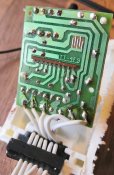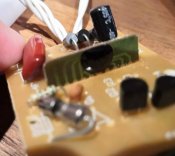lp.descamps
New elf
- Joined
- Jan 13, 2021
- Messages
- 5
hi,
I see a lot of guides on how to bypass completely the controller and have the lights on steady on but any idea if it s possible to to have it hardcoded to slow fade only?
one solution I saw is to replace the capacitor with a bigger one so it keeps the selection in memory while not used but I would like to find a better way
thank you


I see a lot of guides on how to bypass completely the controller and have the lights on steady on but any idea if it s possible to to have it hardcoded to slow fade only?
one solution I saw is to replace the capacitor with a bigger one so it keeps the selection in memory while not used but I would like to find a better way
thank you


Last edited:



